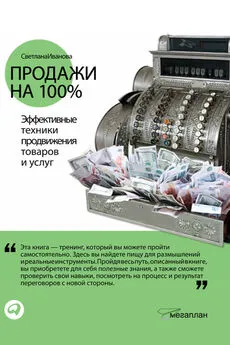Патрик Ренвуазе - Код убеждения [Как нейромаркетинг повышает продажи, эффективность рекламных кампаний и конверсию сайта]
- Название:Код убеждения [Как нейромаркетинг повышает продажи, эффективность рекламных кампаний и конверсию сайта]
- Автор:
- Жанр:
- Издательство:Издательство Питер
- Год:2020
- Город:СПб
- ISBN:978-5-4461-1227-2
- Рейтинг:
- Избранное:Добавить в избранное
-
Отзывы:
-
Ваша оценка:
Патрик Ренвуазе - Код убеждения [Как нейромаркетинг повышает продажи, эффективность рекламных кампаний и конверсию сайта] краткое содержание
Стараетесь быть убедительным, но людей ваши тексты не цепляют? Не секрет, что покупатели принимают решения иррационально, придумывая разумные причины для отказа задним числом, поэтому традиционные модели убеждения и не работают. На помощь маркетологам и продавцам приходит нейромаркетинг, направленный на первичный мозг – древнейшую структуру, которая отвечает за мгновенные и неосознанные реакции.
Опираясь на последние научные данные, Кристофер Морен и Патрик Ренвуазе предлагают модель, которая поможет создать эффективную рекламу, продающие презентации и увеличить конверсию сайта.
Нейромаркетинг – наука убеждать кого угодно, где угодно и когда угодно.
В книге вас ждут: шесть убедительных стимулов, которые обращаются напрямую к первичному мозгу; четыре шага для убеждения любого оппонента; более 30 рабочих кейсов.
Код убеждения [Как нейромаркетинг повышает продажи, эффективность рекламных кампаний и конверсию сайта] - читать онлайн бесплатно ознакомительный отрывок
Интервал:
Закладка:
150. Calder, B.J., Insko, C.A., and Yandell, B. (1974). The relation of cognitive and memorial processes to persuasion in a simulated jury trial. Journal of Applied Social Psychology 4 (1): 62–93.
151. Poppenk, J.,Walia,G., McIntosh, A.R. et al. (2008).Why is the meaning of a sentence better remembered than its form? An fMRI study on the role of novelty-encoding processes. Hippocampus 18 (9): 909–918.
152. Alter, A.L. and Oppenheimer, D.M. (2006). Predicting short-term stock fluctuations by using processing fluency. Proceedings of the National Academy of Sciences, USA 103 (24): 9369–9372.
153. Filkuková, P. and Klempe, S.H. (20113). Rhyme as reason in commercial and social advertising. Scandinavian Journal of Psychology 54 (5): 423–431.
154. Novemsky, N., Dhar, R., Schwarz, N. et al. (2007). Preference fluency in choice. Journal of Marketing Research 44 (3): 347–356.
155. Reber, R. and Schwarz,N. (1999). Effects of perceptual fluency on judgments of truth. Consciousness and Cognition 8 (3): 338–342.
156. Shah, A.K. and Oppenheimer, D.M. (2007). Easy does it: The role of fluency in cue weighting. Judgment and Decision Making 2 (6): 371–379.
157. Reber, R., Schwarz, N., and Winkielman, P. (2004). Processing fluency and aesthetic pleasure: Is beauty in the perceiver’s processing experience? Personality and Social Psychology Review , 8 (4): 364–382.
158. Bernard, M. et al. (2002). A comparison of popular online fonts: Which size and type is best? Usability News (10 January).
159. Cialdini, R.B. (2016). Pre-suasion: A Revolutionary Way to Influence and Persuade, 413. New York: Simon & Schuster.
160. Deighton, J., Romer, D., and McQueen, J. (19890. Using drama to persuade. Journal of Consumer Research 16 (3): 335–343.
161. Monroe,K.B. and Lee, A.Y. (1999). Remembering versus knowing: Issues in buyers’ processing of price information. Journal of the Academy of Marketing Science 27 (2): 207.
162. Algom, D., Dekel, A., and Pansky, A. (1996). The perception of number from the separability of the stimulus: The Stroop effect revisited. Memory & Cognition 24 (5): 557–572.
163. Karmarkar,U.R., Shiv, B., and Knutson, B. (2014). Cost conscious? The neural and behavioral impact of price primacy on decision making. Journalof Marketing Research 52 (4): 467–481.
164. Levy, M. (2010). Loss aversion and the price of risk. Quantitative Finance 10 (9): 1009–1022.
165. Abdellaoui, M., Bleichrodt, H., and l’Haridon, O. (2008). A tractable method to measure utility and loss aversion under prospect theory. Journal of Risk and Uncertainty 36 (245): 245–266.
166. Kadous, K., Koonce, L., and Towry, K.L. (2005). Quantification and persuasion in managerial judgement. Contemporary Accounting Research 22 (3): 643–686.
167. Cialdini, R.B. (1993). Influence: The Psychology of Persuasion , rev. ed., 320. New York: Morrow.
168. Fuller, R.G.C. and Sheehy-Skeffington, A. (1974). Effects of group laughter on responses to humourous material, a replication and extension. Psychological Reports 35 (1): 531–534.
169. Festinger, L. (1954). A theory of social comparison processes. Human Relations 7 (2): 117–140.
170. Smith, C.T., De Houwer, J., and Nosek, B.A. (2013). Consider the source: Persuasion of implicit evaluations is moderated by source credibility. Personality and Social Psychology Bulletin 39 (2): 193–205.
171. Yalch, R.F. and Elmore-Yalch, R. (1984). The effect of numbers on the route to persuasion. Journal of Consumer Research 11 (1): 522–527.
172. Dijksterhuis, A., Aarts, H., and Smith, P. (2006). The power of the subliminal: On subliminal persuasion and other potential applications. In: The New Unconscious (ed. R.R. Hassin, J.S. Uleman, and J.A. Bargh). Oxford, UK: Oxford University Press.
173. Simons, D.J. and Chabris, C.F. (1999). Gorillas in our midst: Sustained inattentional blindness for dynamic events. Perception 28 (9): 1059–1074.
174. Ricard, M. (2017). Beyond the Self: Conversations Between Bu⇨ hism and Neuroscience , 294. Cambridge, MA: MIT Press.
175. Singer,W. (1999). Neuronal synchrony: A versatile code for the definition of relations? Neuron 24 (1): 111–125.
176. Oishi, Y., Xu, Q., Wang, L. et al. (2017). Slow-wave sleep is controlled by a subset of nucleus accumbens core neurons in mice. Nature Communications 8 (1): 734.
177. Anderson, R.C., Pichert, J.W. and Shirey, L.L. (1983). Effects of the reader’s schema at different points in time. Journal of Educational Psychology 75 (2): 271–279.
178. Pichert, J.W. and Anderson, R.C. (1977). Taking different perspectives on a story. Journal of Educational Psychology 69 (4): 309–315.
179. Gates, B. (2009). Mosquitos, Malaria and Education .TED Talk (4 February).
180. Rogers, T. and Milkman, K.L. (2016). Reminders through association. Psychological Science 27 (7): 973–986.
181. Stadler, M. and Ward, G.C. (2010). The effects of props on story retells in the classroom. Reading Horizons 50 (3): 169–192.
182. Handy, T.C., Grafton, S.T., Shroff, N.M. et al. (2003).Graspable objects grab attention when the potential for action is recognized. Nature Neuroscience 6 (4): 421–427.
183. Damasio, A.R. (2010). Self Comes toMind: Constructing the Conscious Brain , 367. New York: Pantheon Books.
184. Gottschall, J. (2012). The Storytelling Animal: How Stories Make Us Human , 248. Boston, MA: Houghton Mifflin Harcourt.
185. van Laer, T., de Ruyter, K., Visconti, L.M. et al. (2014). The extended transportation-imagery model: A meta-analysis of the antecedents and consequences of consumers’ narrative transportation. Journal of Consumer Research 40 (5): 797–817.
186. Mehrabian, A. (1972). Nonverbal Communication , 226. Chicago: Aldine-Atherton.
187. Huth, A.G., de Heer,W.A., Griffiths, T.L. et al. (2016). Natural speech reveals the semantic maps that tile human cerebral cortex. Nature 532 (7600): 453–458.
188. Johnson, D.A. (2016). Newton in the Pulpit , 184.New Sinai Press.
189. Auble, P.M., Franks, J.J., and Soraci, S.A. (1979). Effort toward comprehension: Elaboration or “aha”? Memory & Cognition 7 (6): 426–434.
190. Kember, D. (1996). The intention to both memories and understand: Another approach to learning? Higher Education 31 (3): 341–354.
191. Carlson, K.A. and Shu, S.B. (2007). The rule of three: How the third event signals the emergence of a streak. Organizational Behavior and Human Decision Processes 104 (1): 113–121.
192. Wansink, B., Painter, J.E., and North, J. (2005). Bottomless bowls: Why visual cues of portion size may influence intake. Obesity 13 (1): 93–100.
193. Zeelenberg, M. (1999). Anticipated regret, expected feedback and behavioral decision making. Journal of Behavioral Decision Making 12 (2): 93–106.
194. Ten Brinke, L., Stimson, D., and Carney, D.R. (2014). Some evidence for unconscious lie detection. Psychological Science 25 (5): 1098–1105.
195. Mehrabian, A. and Wiener, M. (1967). Decoding of inconsistent communications. Journal of Personality and Social Psychology 6 (1): 109–114.
196. Moriarty, T. (1975). Crime, commitment, and the responsive bystander: Two field experiments. Journal of Personality and Social Psychology 31 (2):370–376.
197. Cialdini, R.B. (1984). Influence: How and Why People Agree to Things , 302. New York: Morrow.
198. Howard, D.J. (1990). The influence of verbal responses to common greetings on compliance behavior: The foot-in-the-mouth effect. Journal of Applied Social Psychology , 20 (14): 1185–1196.
199. Freedman, J.L. and Fraser, S.C. (1966). Compliance without pressure: The foot-in-the-door technique. Journal of Personality and Social Psychology , 4 (2): 195–202.
200. Deutsch, M. and Gerard, H.B. (1955). A study of normative and informational social influences upon individual judgement. Journal of Abnormal Psychology 51 (3): 629–636.
201. Dunbar, R.I., Marriott, A., and Duncan, N.D. (1997). Human conversational behavior. Human Nature 8 (3): 231–246.
202. Tamir, D.I. and Mitchell, J.P. (2012). Disclosing information about the self is intrinsically rewarding. Proceedings of the National Academy of Sciences, USA 109 (21): 8038–8043.
203. Burnkrant, R. and Unnava, H. (1995). Effects of self-referencing on persuasion. Journal of Consumer Research 22 (1): 17–26.
204. Escalas, J.E. (2007). Self-referencing and persuasion: Narrative transportation versus analytical elaboration. Journal of Consumer Research 33 (4): 421–429.
205. Bargh, J.A. (2017). Before You Know It: The Unconscious Reasons We Do What We Do , 352. New York: Touchstone.
206. Buskist, W. and Saville, B.K. (2001). Creating positive emotional contexts for enhancing teaching and learning. APS Observer 14 (3): 12–13.
207. Tajfel, H., Billig, M.G., Bundy, R.P. et al. (1971). Social categorization and intergroup behaviour. European Journal of Social Psychology 1 (2): 149–178.
208. Tickle-Degnen, L. and Rosenthal, R. (1990). The nature of rapport and its nonverbal correlates. Psychological Inquiry 1(4): 285–293.
209. Wayne, A.H. and Brian, H.K. (1997). Establishing rapport: The secret business tool to success. Managing Service Quality: An International Journal 7 (4): 194–197.
210. Wood, J.A. (2006). NLP revisited: Nonverbal communications and signals of trustworthiness. Journal of Personal Selling & Sales Management 26 (2): 197–204.
211. Iacoboni,M. (2008). Mirroring People: The New Science of How We Connect with Others , 308. New York: Farrar, Straus and Giroux.
212. Preston, S.D., Bechara, A., Damasio, H. et al. (2007). The neural substrates of cognitive empathy. Social Neuroscience , 2 (3–4): 254–275.
213. Coch, D., Dawson, G., and Fisher, K.W. (2010). Human Behavior Learning, and the Developing Brain . London: Guilford Press.
214. Nygaard, L.C. and Queen, J.S. (2008). Communicating emotion: Linking affective prosody and word meaning. Journal of Experimental Psychology, Human Perception and Performance , 34 (4): 1017–1030.
215. Betts, K., (2009). Lost in translation: Importance of effective communication in online education. Online Journal of Distance Learning Administration 12 (2).
216. Rodriguez-Ferreiro, J., Gennari, S.P., Davies, R. et al. (2011). Neural correlates of abstract verb processing. Journal of Cognitive Neuroscience 23 (1): 106–118.
217. Jefferies, E., Frankish, C., and Noble, K. (2011). Strong and long: Effects of word length on phonological binding in verbal short-term memory. The Quarterly Journal of Experimental Psychology 64 (2): 241–260.
218. Sabsevitz, D.S., Medler, D.A., Seidenberg, M. et al. (2005). Modulation of the semantic system by word imageability. Neuroimage 27 (1):188–200.
219. Nieuwland, M.S. and Kuperberg, G.R. (2008). When the truth is not too hard to handle: An event-related potential study on the pragmatics of negation. Psychological Science 19 (12): 1213–1218.
220. Larcker, D.F. and Zakolyukina, A.A. (2012). Detecting deceptive discussions in conference calls. Journal of Accounting Research 50 (2): 495–540.
Читать дальшеИнтервал:
Закладка:
![Обложка книги Патрик Ренвуазе - Код убеждения [Как нейромаркетинг повышает продажи, эффективность рекламных кампаний и конверсию сайта]](/books/1072703/patrik-renvuaze-kod-ubezhdeniya-kak-nejromarketing.webp)









